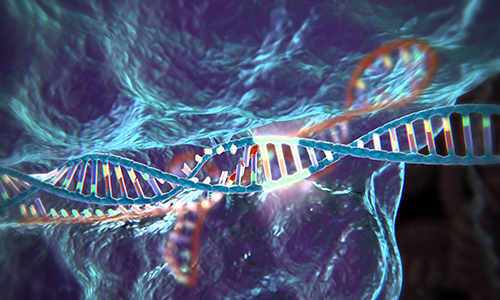Powerful enzyme could make CRISPR gene-editing more versatile
March 2, 2018
Source: Nature.com
 934
934

An enzyme modified in the laboratory could boost the utility of CRISPR–Cas9 gene editing by allowing researchers to tinker with more sites in the genome — while also reducing the risk of undesired changes.
These features could make the enzyme, called xCas9, a laboratory staple, says David Liu, a chemical biologist at the Broad Institute of Harvard and MIT in Cambridge, Massachusetts, who led the work. But it will need more testing before its full potential becomes clear, he adds. The study is published today in Nature1.
Since its introduction about five years ago, CRISPR–Cas9 gene editing has become a key tool in many biology laboratories around the world. The technique allows researchers to make changes to the genome at specific sites with much greater ease than previous methods, but it still has some frustrating limitations.
One is the need to have a specific DNA sequence, called a PAM sequence, next to the site to be modified. Different Cas9 enzymes found in nature require different PAM sequences. The Cas9 most commonly used in laboratories was isolated from the bacterium Streptococcus pyogenes, and its PAM allows researchers to target about one out of every sixteen sites in a genome.
That’s good enough for many applications: researchers who want to disable a gene, for example, can select many sites within that gene to edit. But PAMs can become restrictive when researchers are trying to make very specific changes, says biochemist Albert Jeltsch of the University of Stuttgart in Germany.
This could include researchers who are studying how particular DNA sequences, or chemical modifications to specific DNA letters, affect gene expression. “Relief from the PAM restriction is quite important,” says Jeltsch. “Some of these elements are quite small, and then the restriction can be quite relevant.”
Sharpening molecular scissors
To find a way around this, Liu and his colleagues harnessed a method that forced Cas9 to evolve rapidly in the laboratory, accumulating mutations that allowed it to cut next to a variety of PAM sites. Eventually, they ended up with xCas9, which can cut DNA at sites near a broad range of PAM sites and could target one-quarter of sites in a genome.
The team tested its enzyme on dozens of sites in the genome, and combined it with tools called base editors to allow it to swap one DNA letter for another. To Liu’s surprise, xCas9 was also less likely to cut at other sites in the genome than the standard laboratory enzyme.
The same approach could be used to alter other variants of the Cas9 enzyme, including the relatively small Cas9 proteins that some hope to use for gene therapy, says bioengineer Prashant Mali of the University of California, San Diego. Those proteins, he says, tend to have frustratingly restrictive PAM sequences.
Synthetic biologist Stanley Qi of Stanford University in California calls the work “dazzling”, and says his team is eager to try it in the laboratory. “I am amazed that the new Cas9 has both broader PAM recognition and higher specificity,” he says. “That’s amazing biology.”
By DduRead more on
- Things to Know before Buying Newborn Baby Incubators March 31, 2022
- Highly Resistant Food Poisoning Bug Responds to Antibiotics September 6, 2018
- Smartphone Based Diagnosis to Identify Mosquitoes Transmitting Infection September 5, 2018
- 3 Natural Plant Extracts Manufacturers on Drugdu.com September 4, 2018
- Shenzhen Chuanggan – Health Assessment Facility Supplier September 4, 2018
your submission has already been received.
OK
Subscribe
Please enter a valid Email address!
Submit
The most relevant industry news & insight will be sent to you every two weeks.



